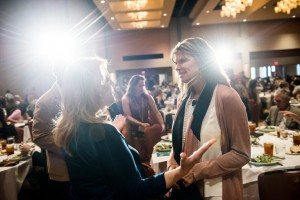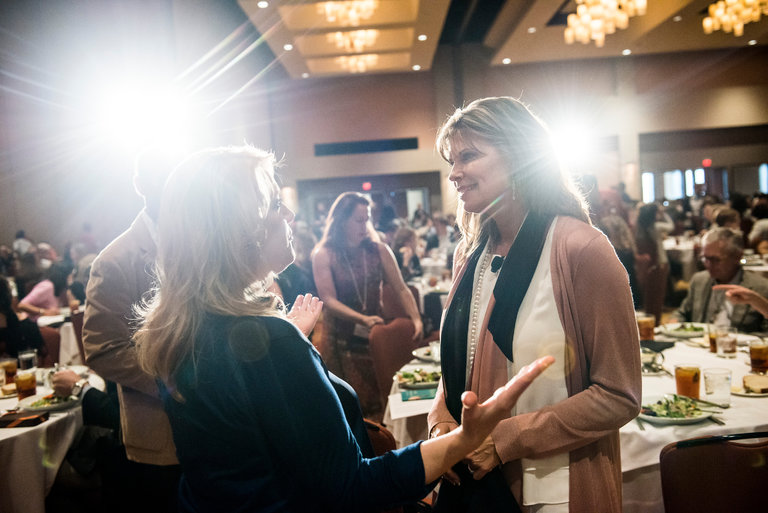
SOMETIMES the hardest part of being a philanthropist is saying no — particularly if the request comes from worthy organizations or equally well-heeled friends.
“We start from a place of empathy,” said Susan Wolf Ditkoff, partner and co-head of the philanthropy practice at the Bridgespan Group, a consultancy. “It’s hard to say no to someone working on a worthy cause.”
But saying no is sometimes necessary, and how philanthropists say it can clarify their mission and even help the rejected organization.
In some instances, no comes after yes. Carrie Morgridge, vice president of the Morgridge Family Foundation and the author of “Every Gift Matters: How Your Passion Can Change the World,” said her family’s foundation often makes three-year gifts to groups working in education, health, the arts and the environment.
But she said she told organizations at the outset that three meant three. “We’re often asked, ‘Can’t you just do Year 4?’” she said. “We say, ‘No, that’s part of our agreement.’ When we say no, we try to guide them to the resources in the other foundations and the other resources in the sector.”
A no like that should be expected. Other times an organization can become complacent with the grants it gets year after year. Rudolph G. Andrea, president of the Andrea-Mennen Family Foundation, said his foundation had put organizations on hiatus when they lost touch and then suddenly asked for more money as if they had been in contact all along.
He said this happened recently when he mentioned the lack of communication from an organization to the organization’s former executive director. Her successor called within 48 hours. He figured he would have never received that call had he not said something.
“I took the position that right now you’re out of the rotation,” Mr. Andrea said. “That’s the tough part when you have a relationship that was great.”
Most of the time, though, the no comes before a relationship has been established.
John Oddy, senior philanthropic director at Foundation Source, recently wrote “Just Say No: The Art of the Turndown,” a white paper that outlines the best ways to reject requests. At the top of his list is to be direct but compassionate with organizations.
“Part of giving them the news is allowing them to feel like they’ve done everything they could — to the extent that you can validate their cause or their effort while at the same time saying this isn’t a great fit,” he said. “You have to be firm but compassionate.”
Marianne Philbin, executive director of the Pierce Family Foundation in Chicago and also a lecturer on philanthropic issues, says that as hard as saying no can be for philanthropists, it doesn’t get easier with time.
“The earlier you can make a decline for legitimate reasons, the less painful it is for everybody,” she said. “The sooner you can establish is there a fit here or not, the more respectful you are of everyone’s time.”
The Pierce foundation, she said, focuses on funding services for the homeless in Chicago but more specifically on making grants to help organizations with operating expenses. She said having such a specific screen limits most of the applications that would be outside the scope of what it would fund.
“When declines are the most difficult is when an agency is taken through a laborious process that takes up time from board members and staff and the C.E.O. and it still comes out with a no,” she said. “It is much more difficult than working with a foundation that has a very fine screen at the front end so the grant seeker can find out sooner rather than later if there’s a real possibility there.”
Ms. Ditkoff said she had one philanthropic client who was brutally honest in his rejections. “He says, ‘I don’t want to beat around the bush. This isn’t something I’d invest in. I could waste your time by sending you to my executive director and waste her time as well.’”
That kind of bluntness isn’t the norm, she said.
Yet no, if presented in the right light, can be helpful to an organization. Melissa Beck, executive director of Educational Foundation of America, which gives money to arts, environmental and reproductive rights organizations, said she often focused on the reason behind a no and how it could benefit an organization.
“We’re dedicated to the areas we fund,” Ms. Beck said. “‘No’ is an opportunity to strengthen an organization.”
“No one benefits when there’s a gloss put on a rejection,” she add
ed. “If the foundation is dedicated to their strategy, having a really frank strategic discussion could lead to a fresh conversation.”
And this is where no might mean maybe or yes later. Charlene Wood, whose father started an amusement park and several restaurants and hotels in the Lake George area of New York, said her family foundation, Charles R. Wood Foundation, focused on organizations supporting children, the arts and health care within a two-hour radius of Lake George. She said grants ranged from $2,000 to over $1 million.
When an organization that she likes gets turned down, she will often offer a suggestion.
“Sometimes, it’s a gray area” and the board will discuss it, she said. “Sometimes, we go back to them and ask them to come back to us. We might ask them to come back with a children’s program.”
And how should the organization that has been turned down react?
“If someone says no, act graciously, and ask, ‘What do I need to do to turn this into a yes?’” Ms. Morgridge said. “I say, ‘Go to one of my other partners, have lunch with them and ask them.’ No is a soft no when done right.”
Then there is the no that comes when philanthropists are asked by their friends or peers for donations to their own charities. Mr. Oddy said this forces the turndown to be more nuanced because it is a conversation between what he called “social and net-worth peers.”
For philanthropists with private foundations, he often recommends they send the request to the board. When the request is rejected, the philanthropist can blame the board.
Of course, this tactic is fairly transparent. At that point, he said, people need to show they care about that cause or honor.
“You could say, ‘The foundation won’t support it, but I’ll personally come to the benefit where you’re being honored to show you that I care about you and your cause,’” he said. “But make it clear that you’re not going to be ongoing funders.”
Ms. Ditkoff tried to put this type of giving into perspective. “Sometimes, you’re going to say yes to something because you really care about it,” she said. “Or sometimes, it’s a business associate or an alma mater. Just name that and be honest about it.”
But however they handle requests, every philanthropist has to say no at some point. “Declining worthy projects is part of the package,” Ms. Philbin said. “The how is an expression of your values and it also can be an expression of support and respect for the agencies coming to you for help, even if you’re not able to supply a grant.”

